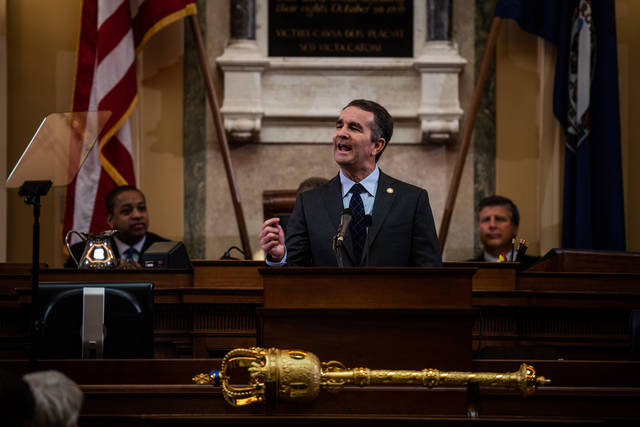Pat Buchanan: Culture war comes to Virginia
Since 1969, “Virginia Is for Lovers” has been the tourism and travel slogan of the Commonwealth of Virginia. Advertising Age called it “one of the most iconic ad campaigns in the past 50 years.”
But the Virginia of 2020 seems to be another country than the friendly commonwealth to which this writer moved four decades ago.
Charlottesville, home to Thomas Jefferson’s University of Virginia, was the site of a 2017 Klan-Nazi clash with antifa over the removal of a statue of Robert E. Lee from a municipal park, in which protester Heather Heyer was run over and killed.
There followed the inauguration of a new Democratic governor, Ralph Northam, in 2018 and a new attorney general. Both, it was learned, had masqueraded in blackface in their college days. And two women accused their colleague, new Lt. Gov. Justin Fairfax, with rape.
Resignations were demanded. But all three hunkered down, and the crisis abated. Now a new cultural issue has emerged.
First-term Rep. Jennifer Wexton, from the D.C. suburbs, has denounced Virginia’s representation in the U.S. Capitol by statues of George Washington in the Rotunda and Lee in the crypt a floor below. Both statues have represented Virginia for more than a century.
Wexton wants Lee replaced by an African-American hero from a list that she and Rep. A. Donald McEachin reportedly submitted.
Two names on their list are unfamiliar figures from the desegregation days of the 1950s. The third is better known: Nat Turner.
In “The Americans: A Social History of the United States,” published in 1969, author J.C. Furnas describes the deeds of the man Wexton and McEachin would be pleased to see replace Robert E. Lee: “In August 1831, Nat Turner, paranoid slave preacher and cunjur man, led his superstition-fuddled followers to kill fifty-five whites of all sexes and ages in an aimless terrorizing of Southhampton County in the southeastern corner of Virginia.
“The poor twisted creature could hardly have found a worse time to sharpen Southern fears of a slave rising.” Turner was tried and hanged and, that winter, writes Furnas, “The Virginia legislature voted down by a narrow margin a bill for gradual extinction of slavery.”
Turner’s terrorism had set back emancipation.
Let me go out on a limb: If the Virginia General Assembly votes to replace Lee in the U.S. Capitol with a statue of Turner, it will not be the unifying event Wexton imagines.
But the Assembly will be dealing soon with measures even more volatile.
On Jan. 20, “Lobby Day” at the Assembly, thousands of gun advocates, many openly armed, will be coming to Richmond to protest new gun laws Northam and his new Democratic majority campaigned on and are determined to deliver.
The divisions among Virginians are not only over history, heroes and guns, they are also moral and religious.
A year ago, Northam said he supported abortion through all nine months of pregnancy, and beyond, if an abortion were unsuccessful.
Unlike the seven states of the Deep South, Virginia did not vote to secede and leave the Union until President Lincoln issued his call to arms to put down the rebellion after the Confederates fired on Fort Sumter.
Then the state of Virginia seceded from the Union as the colony of Virginia had seceded from Great Britain at Philadelphia 84 years before.
Today, it appears a new secession is under way. Virginians are separating from each other over issues as deep and divisive — such as who can take innocent life and when — as those that divided us in 1861.
As are the rest of their countrymen in this time of Trump.
Pat Buchanan is author of “Nixon’s White House Wars: The Battles That Made and Broke a President and Divided America Forever.”
Remove the ads from your TribLIVE reading experience but still support the journalists who create the content with TribLIVE Ad-Free.

